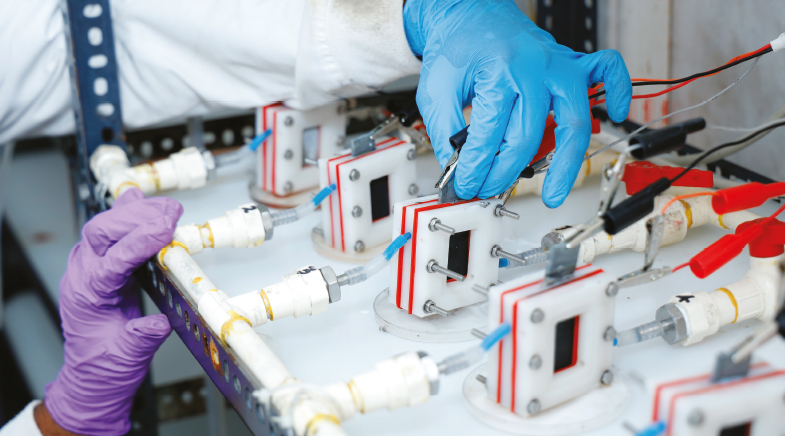All set for Ocean 6,000
-
- from Shaastra :: vol 04 issue 08 :: Sep 2025

India's first aquanauts test the waters for an Indian Ocean mission.
In August, two men quietly clocked records for travelling to the greatest depths by any Indian. Ramesh Raju, an expert in remotely piloting underwater vehicles, often below Antarctic ice, and Commander Jatinder Pal Singh, a retired naval officer from the submarine cadre, became India's first aquanauts after taking a dip to the bottom of the Atlantic Ocean on board the French submersible, Nautile.
While Raju, who took the trip on August 5, travelled 4,025 metres below sea level, Singh's dive on August 6 reached a depth of around 5,002m. Each voyage lasted over nine hours. The process had to be slow. The descent and ascent took up half the time, and the remaining hours were spent on the sea bottom. The aquanauts conducted such experiments as using a hydraulic-operated robotic arm to collect samples from the bed.
Raju and Singh are from the Chennai-based National Institute of Ocean Technology (NIOT), which specialises in marine technology. It is vested with developing Matsya-6000, an indigenous submersible, named after an avatar of Vishnu, that aims to reach 6,000m in the Indian Ocean. Matysa-6000 is part of India's Samudrayaan mission to explore the potential of the ocean beds around India.
The dives for the two aquanauts were akin to test drives. "We wanted to give our scientists a hands-on experience on what such voyages to the deep entail, even as we plan our own mission," says Jitendra Singh, Minister of State, Earth Sciences.
A human submersible is an autonomous vehicle that can sink to the bottom of the sea. It is equipped with portholes and external lights for illuminating the dark depths. Research vehicles have robotic arms to collect samples, and external cameras, too. They need to be light to enable the dive, yet sturdy enough to withstand the pressure of the water column, which increases by 1 atmospheric pressure for every 10m.
Scientists are at an advanced stage of developing a submersible with a crew capsule.
Scientists at NIOT are at an advanced stage of developing the submersible. A human submersible has several components, including the crew capsule, engines, life support systems, and telecommunication systems. These components are being manufactured and tested at various places, and will be finally assembled at NIOT. The prototype crew capsule, made of steel, has already been tested with three crewless and three human dives at a depth of 500m. The actual Matsya-6000 crew capsule will be of titanium and is being fabricated by an Indian Space Research Organisation team. It will undergo testing in Russia. A steel capsule will crumple under pressure at those depths. The floatation unit, designed by NIOT, is being produced in France and will undergo testing in Norway. The telecommunications have been tested in a lake in Idukki, Kerala.
M. Ravichandran, Secretary, Earth Sciences, says that the technology has almost all been developed indigenously. "Countries are secretive about parting with deep ocean technology," he says. Even for this "test drive" experience, India reached out to several seabed diving countries such as the U.S., Japan and Russia. Only France agreed to a tie-up, and asked NIOT to be on standby. The dive depended on favourable weather and the availability of a ship to take the submersible to the ocean. The voyage cost around ₹2 crore, most of which went into chartering the ship.
"Our design has some differences; all three aquanauts can sit upright in Matsya to look out of the porthole. In Nautile, only the pilot sat upright; the other two had to be in a prone position," says Raju. Jatinder Pal Singh, a veteran of piloting submarine rescue vehicles, says he utilised his time studying the emergency rescue mechanisms on board. "Matsya-6000 is a fourth-generation vehicle which will have more redundancies built in for safety than any existing submersible," Ravichandran says. The fully fabricated submersible for 500m depth is expected to be ready by March 2026, and Matsya-6000 by March 2027.
Matsya-6000, which is essentially a technology demonstration mission, will be India's own eyes in the Indian Ocean, one of the least explored ocean beds. The two aquanauts planted the tricolour in the Atlantic bed. Now, the Indian Ocean beckons.
Have a
story idea?
Tell us.
Do you have a recent research paper or an idea for a science/technology-themed article that you'd like to tell us about?
GET IN TOUCH














